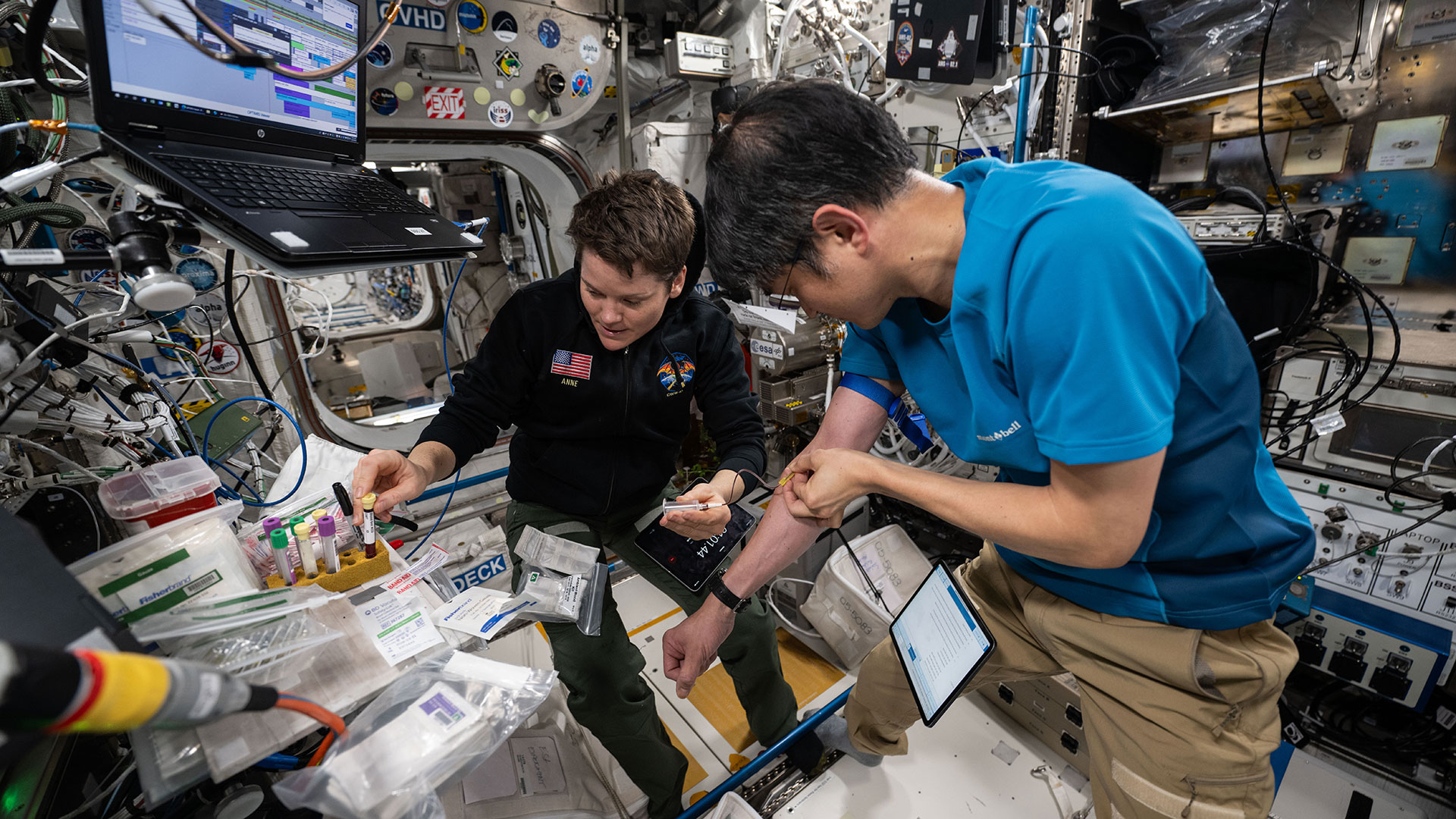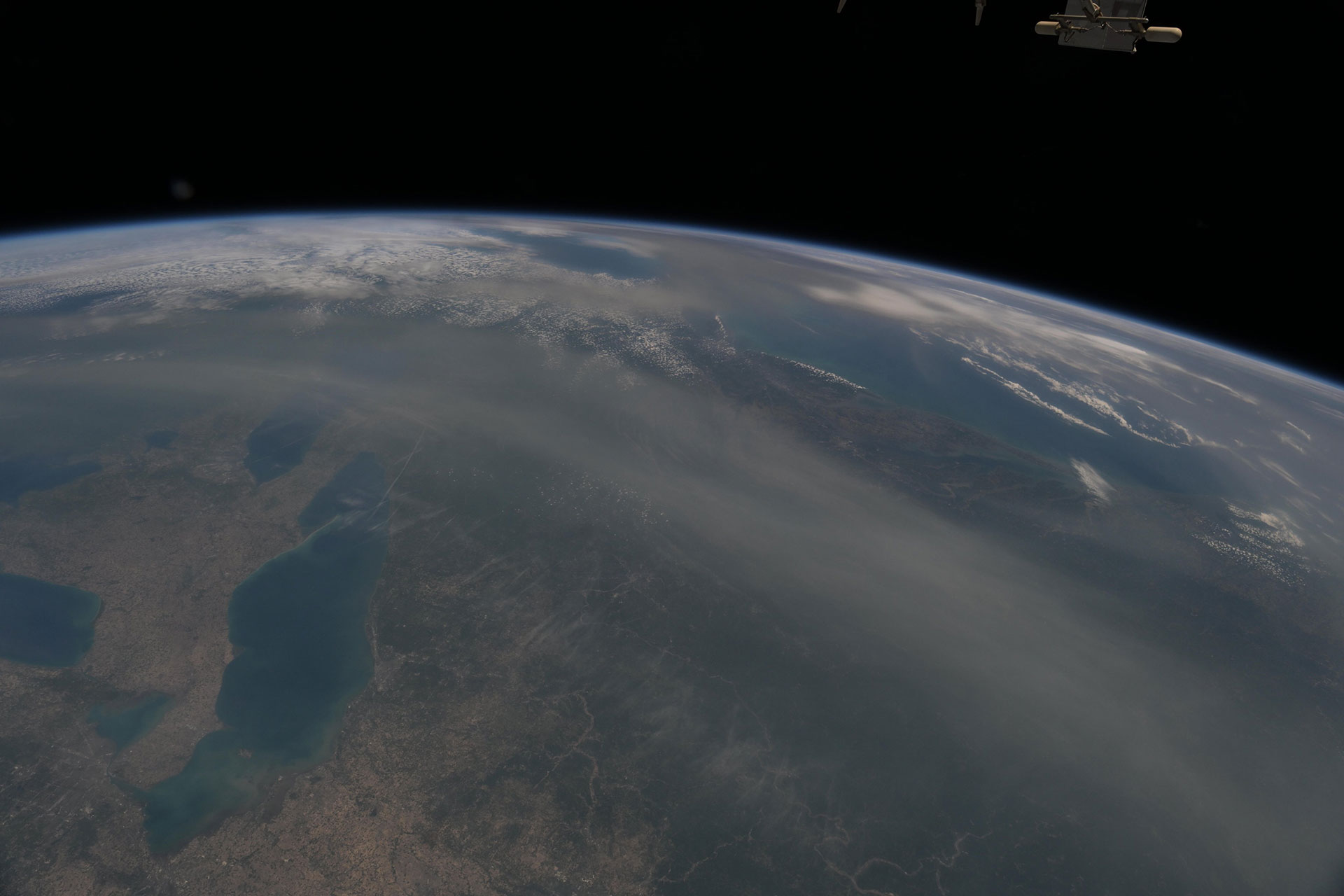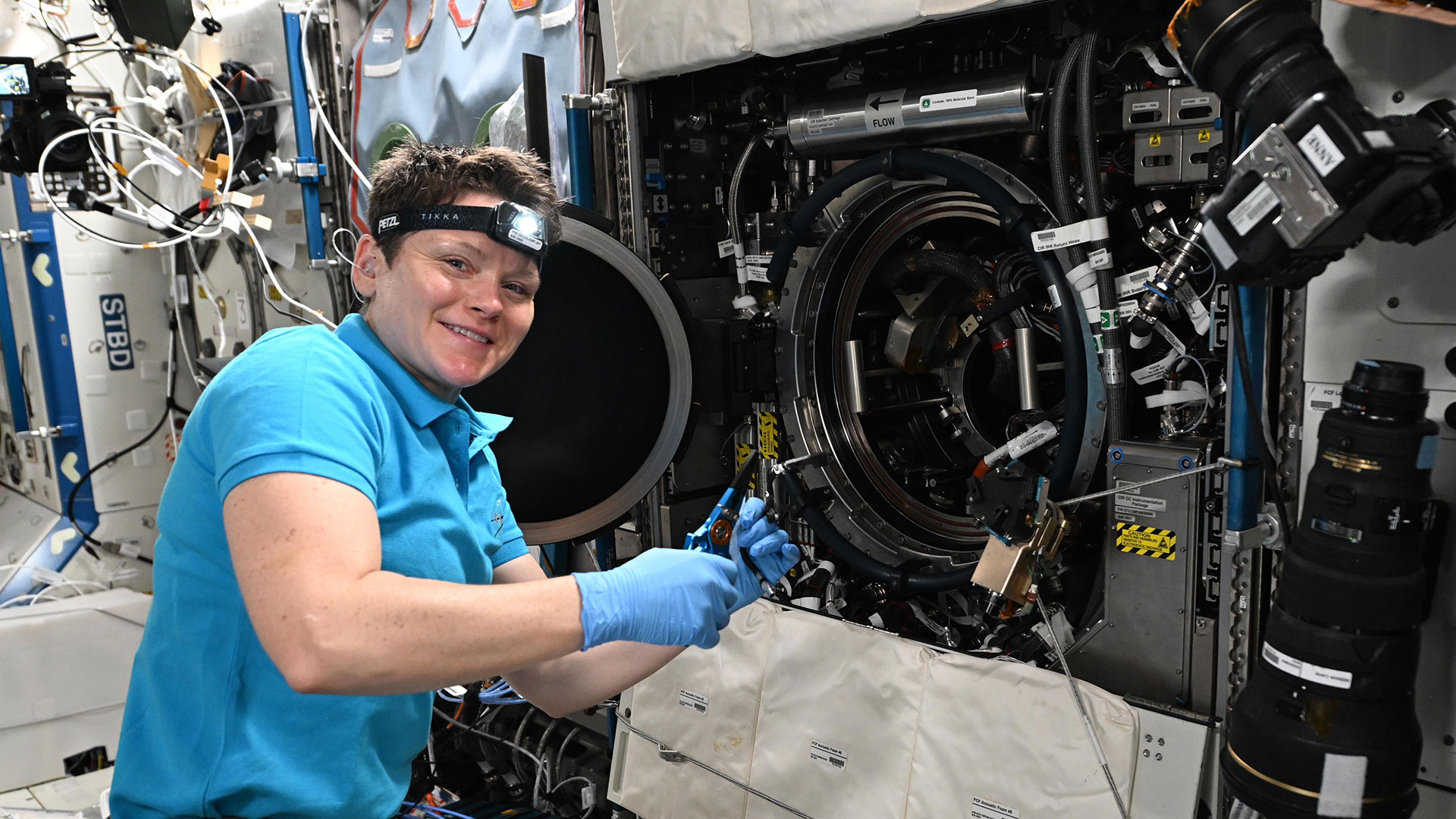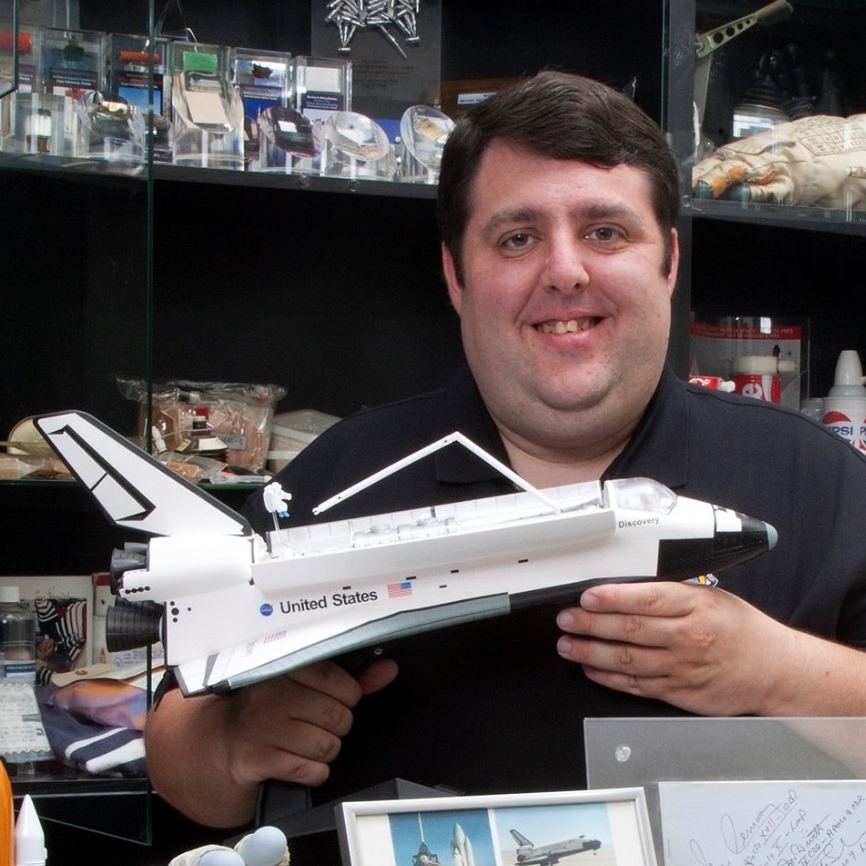Astronauts track huge dust clouds over Canada and US | On the ISS this week June 2-6, 2025
A look back at the week's activities for the Expedition 73 crew.

Preparations for the arrival of a visiting crew, the continued study of how humans adapt to the microgravity environment of space, the service of systems on board a docked cargo ship and the documentation of European landmarks from Earth orbit kept the seven astronauts and cosmonauts on the International Space Station (ISS) busy this week (June 2 through June 6), the sixth week of Expedition 73.
Orbital observation
"I noticed smoke over the Northern U.S. and Canada a few days ago, and it took me a little while to understand what it was. From our perspective, it almost looks like a differently colored cloud formation," flight engineer Nichole Ayers, a NASA astronaut, wrote on X on June 3 after spotting the smoke from wildfires in Canada that has caused evacuations in thee provinces and affected the air quality across several U.S. states.
"The brown hue to the clouds and the fact that they overlapped the white clouds caught my eye. I've been trying to capture it daily to aid in understanding the smoke movement. I hope everyone stays safe!" Ayers wrote.

Science status
Among the research that was conducted aboard the space station this week was:
Bio-Monitor — For two days this week, NASA astronaut Jonny Kim wore this Canadian instrument to assess if it can collect his health data while being comfortable to wear and not interfere with his other activities.
Virtual — Russian cosmonaut Alexey Zubritskiy, assisted by Sergey Ryzhikov, donned a pair of VR goggles as part of a study into the vestibular system's ability in microgravity to visually track movement while also keeping a sense of balance.
Drain Brain 2.0 — Expedition 73 commander Takuya Onishi of JAXA (the Japan Aerospace Exploration Agency) measured the blood flow from his brain to his heart using electrodes from this rapid screening tool, which could help prevent and diagnose blood clots while in space.
Breaking space news, the latest updates on rocket launches, skywatching events and more!
Elvis — Ayers worked with the Extant Life Volumetric Imaging System, a 3D microscope kept in JAXA's Kino laboratory, which she used to observe deep-sea bacteria samples. The demo could lead to using a similar device to identify possible infectious organisms in water supplies both in space and on Earth.
Zubritskiy also spent a couple of days this week documenting Eastern European landmarks while fellow cosmonaut Kirill Peskov took photos of the Volga River and Aral Sea to visually assess the aftermaths of both natural and human-caused disasters.
Station keeping
The crew also devoted time to maintaining the space station's systems, including:
BEAM — Ayers and fellow NASA astronaut Anne McClain moved hardware into stowage aboard the Bigelow Expandable Activity Module, which serves as a "float-in" closet for the station since being installed and inflated in 2016.
Spaceborne Computer-2 — Kim replaced a processor cartridge for this commercial off-the-shelf computer, which is being assessed for its ability to facilitate research analysis without the need for Earth-based support.
PCBA — McClain updated the firmware for the Portable Clinical Blood Analyzer, a handheld unit that is used to quickly test blood samples for numerous research studies conducted on the ISS.
AstroPi — Kim also relocated this computer-controlled camera from a window inside the Unity module to a different window inside the European Space Agency's (ESA) Columbus module. Students remotely use a pair of these cameras for engineering and science projects.
Ryzhikov also cleaned out a heater fan and filled an oxygen generator tank in the Progress MS-29 (90P) cargo spacecraft as well as assisted Zubritskiy in the work to service a neutron radiation detector in the Russian segment of the space station.
Astronaut activity

In addition to the work detailed above, McClain worked on SoFIE-MIST.
"SoFIE-MIST stands for Solid Fuel Ignition and Extinction–Material Ignition and Suppression Test," she wrote in a June 6 X post. "MIST consists of a small-scale combustion wind tunnel, cylindrical fuel sample, an igniter, radiant heaters, and instrumentation. By varying parameters like air flow speed, oxygen concentration, pressure, and level of external radiation, then viewing the resultant flame produced on the sample, we can better characterize early behavior of fire. This helps us choose better materials for use in space, and it helps determine the best methods of extinguishing fires in space."
"This week, I changed out the fuel samples and igniter for the next science run."
Making space for visitors
The Expedition 73 crew's activities this week also included preparing for the arrival of short-term visitors: Axiom Space's fourth commercial mission to the International Space Station is scheduled to arrive aboard a SpaceX Dragon spacecraft on Wednesday (June 11), assuming an on-time launch the day prior.
Former NASA astronaut Peggy Whitson will lead the Ax-4 crew, which includes pilot Shubhanshu Shukla of India and mission specialists Sławosz Uznański-Wiśniewski of Poland (and ESA) and Tibor Kapu of Hungary.
The station crew reviewed the Ax-4 plan with mission managers on the ground while McClain and Ayers, who are assigned to oversee the Dragon's approach from inside the station, went over the docking procedures. The two used a computer to review the situations they could encounter when the Dragon nears the orbiting complex.
Onishi readied the tablet computers that will be used by Whitson, Shukla, Uznański-Wiśniewski and Kapu during their two-week science research mission.
By the numbers
As of Friday (June 6), there are 7 people aboard the International Space Station: commander Takuya Onishi of JAXA, Anne McClain, Nichole Ayers and Jonny Kim of NASA and Kirill Peskov, Sergey Ryzhikov and Alexey Zubritsky of Roscosmos, all flight engineers.
There are two docked crew spacecraft: SpaceX's Dragon "Endurance" attached to the forward port of the Harmony module, and Roscosmos' Soyuz MS-27 attached to the Earth-facing port of the Prichal node.
There are also two docked cargo spacecraft: Rosocmos' Progess MS-29 (90P) attached to the space-facing port of the Poisk module and Progress MS-30 (91P) attached to the aft port of the Zvezda service module.
As of Friday, the space station has been continuously crewed for 24 years, 7 months and 5 days.

Robert Pearlman is a space historian, journalist and the founder and editor of collectSPACE.com, a daily news publication and community devoted to space history with a particular focus on how and where space exploration intersects with pop culture. Pearlman is also a contributing writer for Space.com and co-author of "Space Stations: The Art, Science, and Reality of Working in Space” published by Smithsonian Books in 2018.
In 2009, he was inducted into the U.S. Space Camp Hall of Fame in Huntsville, Alabama. In 2021, he was honored by the American Astronautical Society with the Ordway Award for Sustained Excellence in Spaceflight History. In 2023, the National Space Club Florida Committee recognized Pearlman with the Kolcum News and Communications Award for excellence in telling the space story along the Space Coast and throughout the world.
You must confirm your public display name before commenting
Please logout and then login again, you will then be prompted to enter your display name.
